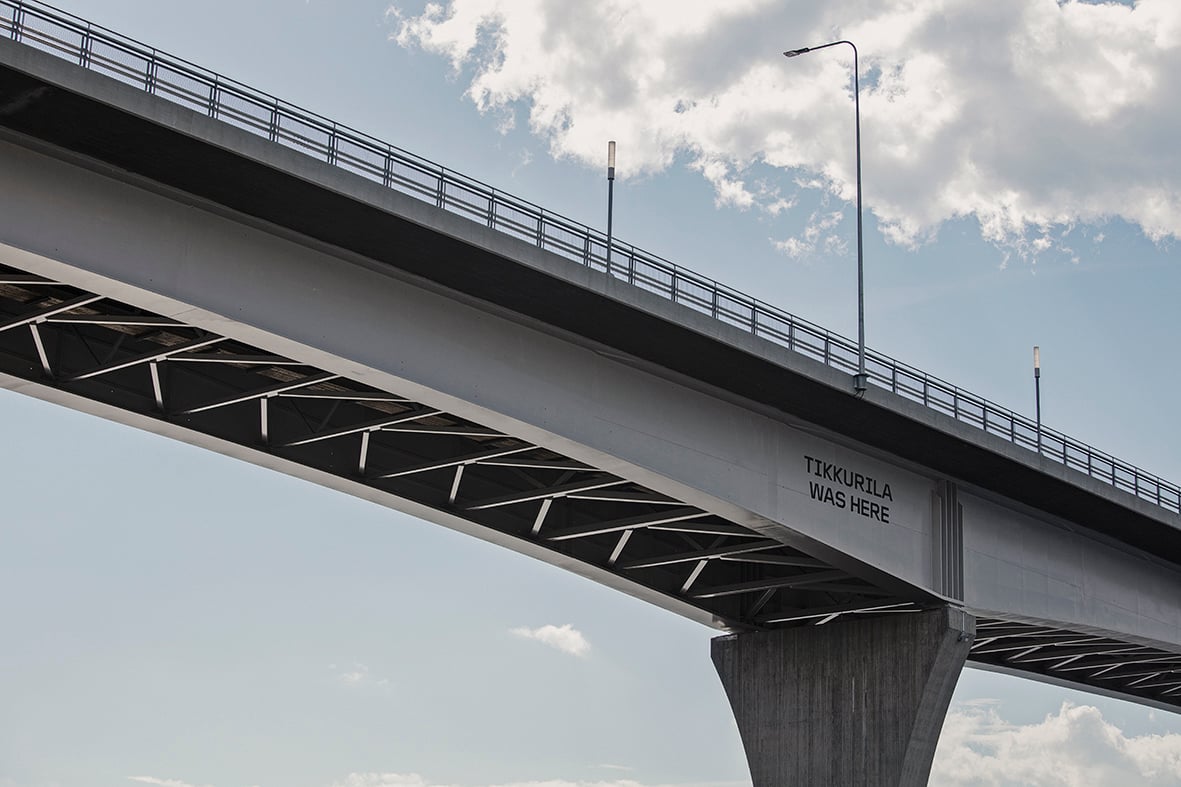
The requirements on major infrastructure projects like airports, ferry terminals, train stations, and bridge constructions are extremely high. Since these massive structures are meant to last a lifetime, the metal coatings used need to guarantee durability and optimal corrosion protection.
How can you best protect major steel structures from corrosion? We outline the key factors to consider when coating major steel structures.
Evaluate the structural steel's exposure
What environment does your steel structure need to withstand? Exterior surfaces are exposed to all types of weather conditions like rain, snow, direct sunlight, dust, dirt, and soluble salts. Depending on the structure’s geographical location, the corrosivity can be lower or higher.
Interior surfaces are protected against weather but can be exposed to damp environments with high humidity and condensation. They can also be exposed to chemical stress, depending on the service location.
As an example of coating exterior metals, we worked with Ruukki Construction to replace Finland’s sixth largest bridge—Jännevirta bridge—at the end of its lifetime. For this mega infrastructure project, protecting the bridge from harsh weather, wind, precipitation, and humidity was crucial. Ruukki Construction supplied and installed 2,430 tons of steel structures, and Midroc Alucrom pre-painted them using 15 000 litres of Tikkurila paint at the Ylivieska factory.
Use tried and tested industrial metal coatings
Heavy steel constructions require tough metal coatings. When working on a mega infrastructure project, choose products that are tried and tested to avoid any problems before or after the guarantee period.
“The requirements are extremely high on constructions that will last a lifetime. That’s why it’s important that the product is tried and tested, so that we will not encounter problems during or after the guarantee period.”
- Heikki Wilen, Business Director at Ruukki Building Systems
Industrial paints and coatings that last will reduce maintenance and ensure the objects look good over time. At Tikkurila, all of our metal coatings and many systems have been tested in laboratory and in real-life conditions. Our products also comply with the international standard ISO 12944 and we have systems approved according to NORSOK M-501 targeting offshore only.
Select products for corrosion protection based on the steel structure's environment
How exactly can you choose the right metal coatings for your structural steel needs? When selecting products, consider the special requirements for certain environments.
Atmospheric environment
Choosing the right corrosion-protection system is crucial to protect steel structures in exterior environments. Paint systems with very long durability and corrosion protection typically include zinc rich primers, epoxies, polyurethanes (PUR), or other topcoat technologies. Using zinc rich primers—epoxy and/or ethyl silicate types—is one of the most effective ways to protect steel structures from corrosion. Zinc, acting as a sacrificial anode, gives cathodic protection to the structure. Since zinc oxidizes faster than the metal it is protecting, it sacrifices itself instead of the steel.
Epoxy mid coats usually contain anti-corrosive pigments. The epoxy is often further reinforced with a laminar pigment like aluminium or micaceous iron oxide (MIO) to give it enhanced barrier protection, which prevents water from entering into the steel and causing corrosion.
Immersed environment
Products that contain zinc typically aren’t used for steel structures that will be permanently located in water or soil. For these environments, high-build epoxy paints with high barrier protection are used. The first layer is often an aluminium and/ or MIO containing epoxy, providing a highly cross-linked film. Since the steel structure is not visible and therefore not exposed to UV rays, there’s no need to use a PUR topcoat.
The corrosion protection paint systems described in corrosion standards are regulated by the number of paint layers and film thickness. The higher the demands, the more layers and higher film thickness are required.
Consider the construction of the steel structure
To ensure the best possible corrosion protection, it’s important to consider the construction and design of the steel structure. You want to avoid designs that will collect and keep water, dirt, and pollution in the structure. Instead, the design of the object and structure should allow water to easily flow away and dry out. This way, contaminating substances won’t affect the painted surface.
Additionally, a paint system will provide much longer corrosion protection if water can be dried out between rain and weather exposure.
Prepare metal surfaces before applying the paint
Before applying any coating to a steel substrate, correctly prepare the surface to ensure the paint’s optimal performance. Preparing the surface not only involves cleaning the steel, but also ensuring it’s in the right condition to receive the protective coating. You don’t want to skip this step, as surface preparation is known to be the most crucial factor affecting the success of your corrosion protection system.
First, remove all impurities from the steel substrate, such as oil, grease, and dirt. Then use blast cleaning to remove any mill scale, which helps to ensure proper paint adhesion. This is an important step, as a coating’s ability to adhere properly to the substrate has a big influence on the coating’s performance.
You’ll also want to follow any specifications according to the climate conditions and temperature where you’ll be applying the paint. In the standards used to describe and specify corrosion protection paint systems like ISO12944 and NORSOK M-501, the preparation of the surface is regulated in detail.
Take a holistic approach to structural steel corrosion protection
There are many factors involved in protecting steel structures from corrosion, including the ways of working, equipment, inspection, and knowledge of how to do it right.
Simply choosing the right metal coatings isn’t enough to achieve the best results if you don’t consider the construction of the steel structure and properly prepare the surface for painting.
Taking a holistic approach that takes every step of the process into account will ensure your steel structures stay well-protected from all types of corrosion now and into the future.



